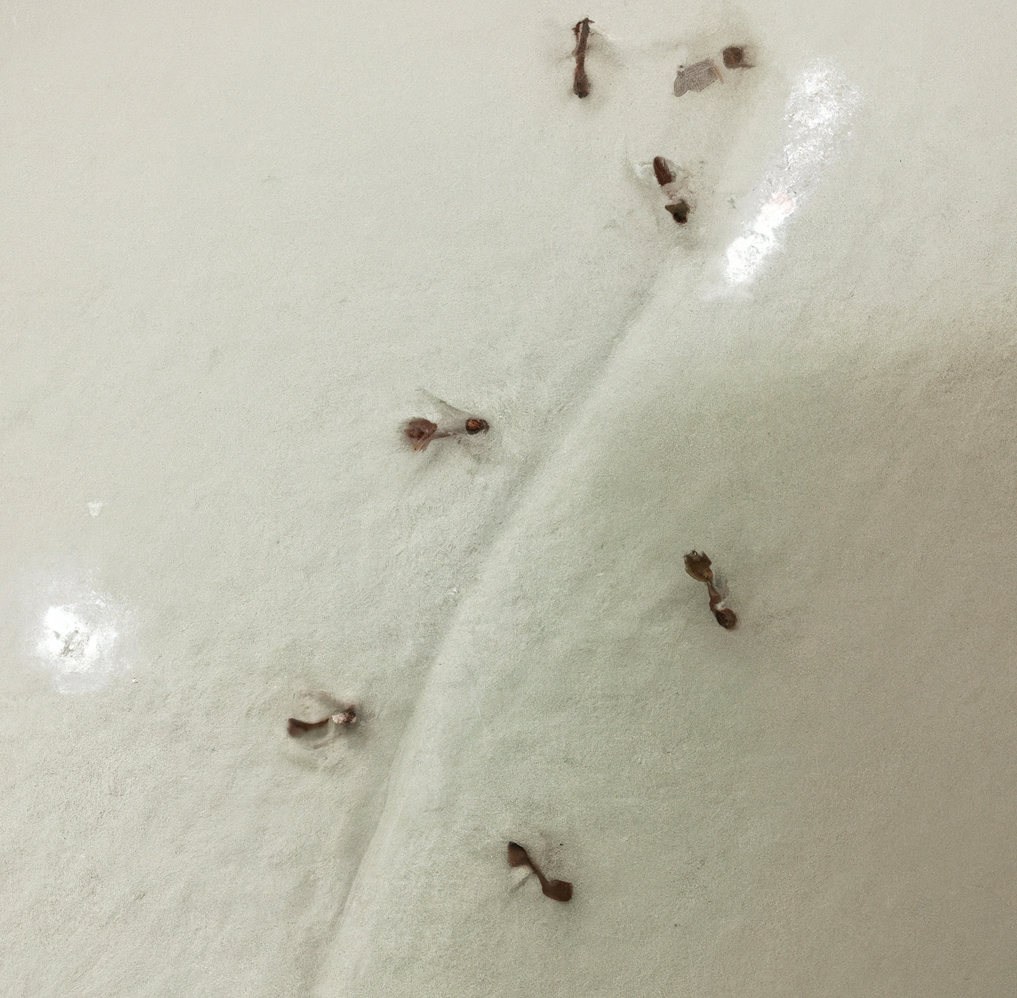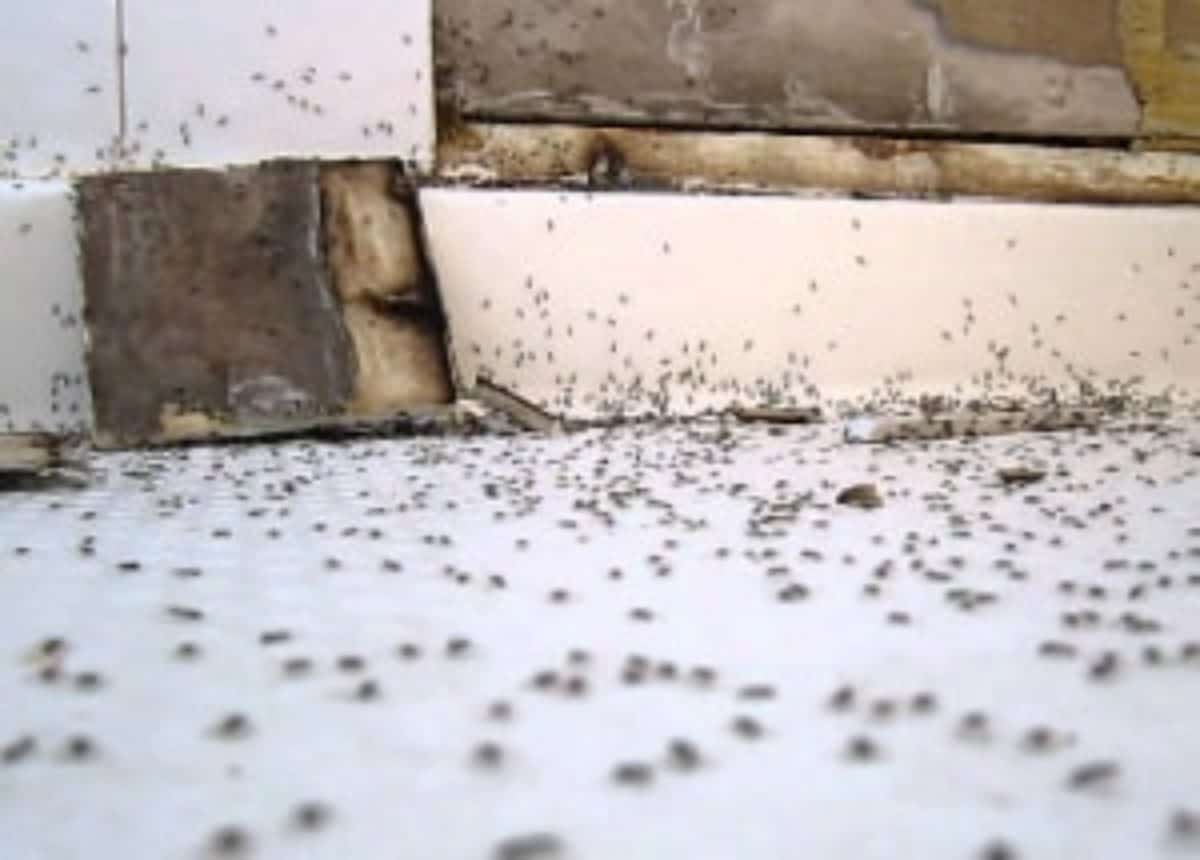Identifying Little Red Ants

Little red ants in bathroom – While the name “little red ants” might sound straightforward, there are actually several ant species that fit this description. Identifying the specific type of ant you have in your bathroom is crucial for effective control, as different species have varying behaviors and preferences.
Little red ants in the bathroom can be a nuisance, especially if they find their way into your toiletries. To create a more welcoming environment, consider incorporating a touch of nature with a forest furniture bathroom vanity. This can add a rustic charm while deterring ants, as they may prefer the outdoors.
However, remember to keep your bathroom clean and dry, as ants are attracted to moisture and food crumbs.
Physical Characteristics of Little Red Ants
Little red ants, also known as “fire ants,” are small, reddish-brown ants that are typically 1/16 to 1/8 inch long. They are often mistaken for other ant species, but there are several key features that help distinguish them.
Na sogot ni hapehon ni ulaon, sai marsiak do di angka semut merah di kamar mandi. Manang marsiak do di parbuean, alai sai marsiak do di kamar mandi. Asa boi marsiak di kamar mandi, boi ma hita mambahen kamar mandi i marsiak songon french provincial bathroom furniture.
Asa boi marsiak di kamar mandi, sai marsiak do di angka semut merah i.
- Size and Color: Little red ants are relatively small, with workers measuring between 1/16 and 1/8 inch in length. They have a distinctive reddish-brown color, which can vary slightly depending on the species and their diet.
- Body Shape: They have a slender, elongated body with a distinct waistline separating the thorax from the abdomen. Their antennae are elbowed, meaning they bend at a sharp angle.
- Stinger: One of the most distinguishing features of little red ants is their stinger. They are known for their painful sting, which can cause a burning sensation and redness. However, not all little red ants have a stinger, so it’s not always a reliable identification feature.
Little Red Ant Behavior in Bathrooms

Little red ants, also known as Pharaoh ants, are a common household pest that can often be found in bathrooms. Their presence in these areas is due to several factors, including the availability of food sources, moisture, and potential nesting sites. Understanding their behavior in bathrooms is crucial for effective control and prevention.
Foraging Patterns
Little red ants are highly active foragers, constantly searching for food and water. Their foraging patterns are influenced by the availability of resources and the presence of trails. These ants follow pheromone trails laid down by other ants, creating well-defined paths that lead them to food sources. In bathrooms, they often follow these trails along walls, under sinks, and around toilets, seeking out food crumbs, spills, and other sources of sustenance.
Nesting Habits
Little red ants are known for their complex and adaptable nesting habits. They can establish nests in various locations, including cracks and crevices in walls, under sinks, and within the spaces between tiles. They prefer warm, humid environments, making bathrooms an attractive nesting site.
Food Sources
Little red ants are opportunistic feeders and will consume a wide variety of food sources. In bathrooms, they are particularly attracted to:
- Food crumbs: Leftover food particles, such as crumbs from toothpaste or soap, can attract ants.
- Spills: Spilled beverages or food items can provide a rich source of nutrients for ants.
- Pet food: If pet food is left out, ants may be drawn to it.
- Moisture: Little red ants are attracted to moisture, making damp areas like bathrooms particularly appealing.
Factors Attracting Little Red Ants to Bathrooms, Little red ants in bathroom
Several factors contribute to the attraction of little red ants to bathrooms:
- Moisture: Bathrooms are often damp due to showers, baths, and condensation, providing an ideal environment for ants.
- Food crumbs: Bathrooms can harbor food crumbs from toothpaste, soap, or other hygiene products.
- Potential nesting sites: The cracks and crevices in bathrooms offer suitable nesting sites for little red ants.
Potential Dangers
The presence of little red ants in bathrooms can pose potential dangers:
- Allergic reactions: Some individuals may experience allergic reactions to ant bites, resulting in skin irritation, itching, and swelling.
- Food contamination: Ants can contaminate food and surfaces, potentially spreading bacteria and other pathogens.
Preventing and Eliminating Little Red Ants in Bathrooms

You’ve identified the little red ants in your bathroom, and now it’s time to take action! Preventing these tiny invaders from taking over your space is key, and thankfully, it’s not a mission impossible. Let’s explore some strategies to keep your bathroom ant-free, and if they’ve already set up camp, we’ll tackle their eviction.
Preventing Little Red Ants from Entering Bathrooms
Preventing little red ants from entering your bathroom is the first line of defense. By sealing entry points, eliminating food sources, and maintaining a clean and dry environment, you can create an unwelcome habitat for these pesky insects.
- Seal Entry Points: Little red ants are experts at squeezing through tiny cracks and crevices. Inspect your bathroom for potential entry points, such as gaps around pipes, windows, doors, and baseboards. Seal these openings with caulk, weather stripping, or expanding foam. Think of it as creating a fortress around your bathroom, making it impossible for the ants to breach.
- Eliminate Food Sources: Little red ants are attracted to food crumbs, spills, and even the sweet residue left behind from toothpaste or soap. Wipe down countertops, sinks, and floors regularly to remove any potential food sources. Keep food items in airtight containers and avoid leaving dirty dishes in the sink. You wouldn’t want to invite them to a feast in your bathroom, would you?
- Maintain Cleanliness: Little red ants are attracted to moisture and clutter. Regularly clean and dry your bathroom floor, especially around the shower or bathtub. Empty trash cans frequently and keep the bathroom well-ventilated. A clean bathroom is a happy bathroom, and it’s definitely less appealing to ants!
Eliminating Little Red Ants from Bathrooms
If you’ve already got little red ants in your bathroom, it’s time to implement a strategic eviction plan. There are a variety of methods available, each with its own pros and cons.
- Ant Traps: Ant traps are a common and effective way to eliminate little red ants. They work by attracting ants with a bait that contains a slow-acting poison. The ants take the poison back to their colony, eventually eliminating the entire nest. Some traps are sticky and simply trap the ants, while others release a pheromone that disrupts their communication, causing them to lose their way and eventually die. However, it’s important to place traps strategically, as they may not be effective if the ants have multiple entry points.
- Ant Baits: Ant baits are similar to traps, but they come in a variety of forms, such as granules, gels, and liquids. These baits are placed in areas where ants are frequently seen, and the ants will carry the poison back to their colony. Ant baits are effective for controlling large infestations, but they can be dangerous for pets and children if ingested. So, always follow the instructions carefully and keep baits out of reach of children and pets. Think of it as a carefully planned operation to eliminate the ants, but with safety as your top priority.
- Natural Remedies: For those who prefer a more natural approach, there are several remedies that can help eliminate little red ants. For example, you can use a mixture of borax and sugar, which is toxic to ants but relatively safe for pets and children. You can also try using essential oils like peppermint or citrus, which ants find unpleasant. However, natural remedies may not be as effective as chemical treatments, and they may require multiple applications to achieve desired results. It’s like a natural battle, but it might take a little longer to win!
Comparing and Contrasting Ant Control Methods
| Method | Effectiveness | Potential Risks |
|---|---|---|
| Ant Traps | Effective for small infestations, easy to use. | May not be effective for large infestations, may not target all entry points. |
| Ant Baits | Effective for large infestations, can reach multiple entry points. | Can be dangerous for pets and children if ingested, may not be effective for all ant species. |
| Natural Remedies | Environmentally friendly, safe for pets and children. | May not be as effective as chemical treatments, may require multiple applications. |